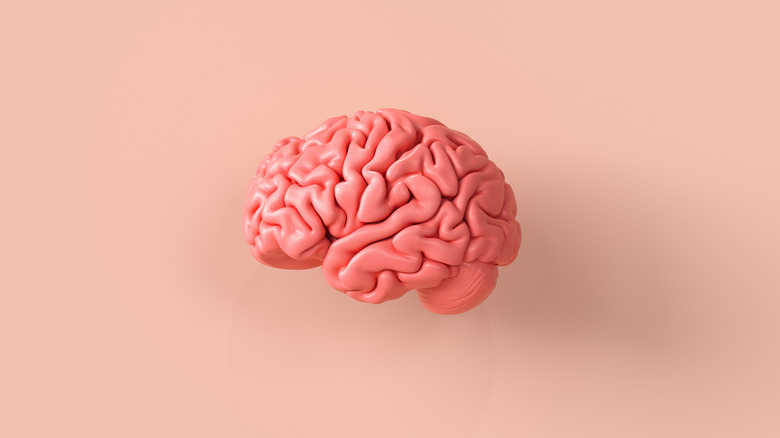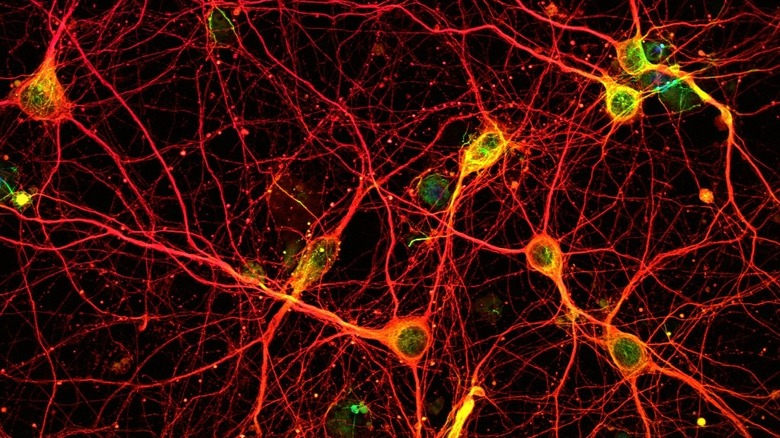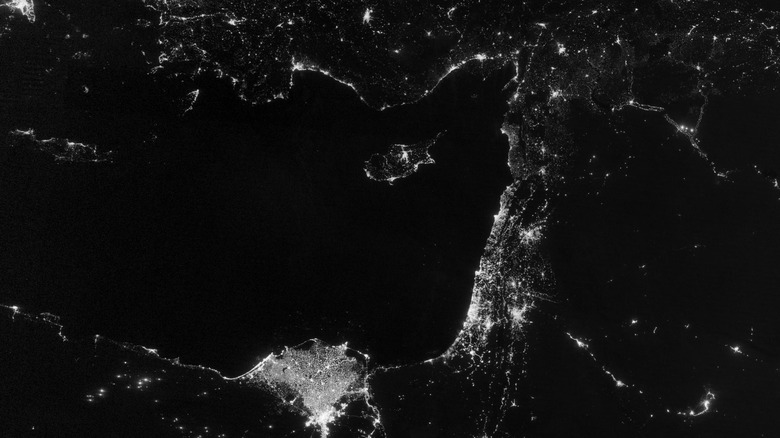The Universe And The Human Brain Look Surprisingly Similar
If you've poked around the internet enough, you might have caught sight of pictures comparing the human brain to the universe. We don't mean the squishy, rumpled gray matter of a brain; we mean the microscopic connections between the brain's nerve cells, aka "neurons," as Difference Between writes.
If you look at a panoramic portrait of the universe, it looks shockingly similar to a close-up, zoomed-in snapshot of neurons in the brain. The glowing nodes are entire galaxies filled with hundreds of billions of stars stretching out like limbs to other galaxies. The brain too has nodes, which are clusters of neurons stretching out through the cellular arms of dendrites and axons to other neurons.
And it's not just human brains and the cosmos that share similarities in appearance. Networks of tree roots (via Harvard University), ant colonies (via the World Economic Forum), glowing city lights as viewed from space (Pinterest has good pictures), and much more all exhibit similarly networked, node-and-conduit shapes. As life grows more and more complex it seems to take the same form. Whether information is transferred by water molecules through roots or the mandibles of ants through tunnels, it moves from node to node according to the needs of its system.
ScienceAlert reported on a study conducted by Frontiers in Physics that dives into the human brain/universe comparison. The results are truly stunning and show exactly how much of the cosmos lives in us, and we in it.
Nodes of galaxies and neurons
As ScienceAlert explains, the difference in scale between a single human brain and the universe — even the tiny part we can see of the observable universe — is vast beyond compare. The universe is a "billion billion billion" orders of magnitude bigger. But, the distribution and proportions of each is eerily similar.
There are roughly 69 billion neurons in the human cerebellum (pictured above), and about 100 billion galaxies in the observable universe. About 77% of the brain is filled with water, and 72% of the universe is the mysterious, pervasive dark energy. The spectral density of cells in the cerebellum ranges from 1 micrometer to 0.1 millimeters, and the cosmic web density is 5 million to 500 million light-years, which follows the same distribution progression. Using differing but comparable sample sizes, the human brain has an average of 4.6 to 5.4 connections per node, and the cosmos 3.8 to 4.1 connections per node. In each system, about 25% of its mass and energy directly relates to the flow of information and energy. The list goes on and on.
We can look to the unblemished wisdom of a child to ask perhaps the most mind-boggling question of all. As The Conversation cites from their "Curious Kids" series, one 12-year-old in Edinburgh stated, "The universe looks like a giant brain. If it's the brain, where's the body?" Have fun envisioning that we humans are mere atoms in the multi-galaxy-spanning neural network of a cosmic god.
Networks of life
So how is all of this possible? Is it just humans doing their typically human thing by drawing connections between patterns that don't actually exist?
The truth may be pretty simple, as ScienceAlert touches on. Every object in the universe — a single cell, a network of tree roots, the human brain, a blazing star, an entire galaxy — is subject to the same rules that govern its growth. We're talking physical, fundamental rules of reality: gravity, electromagnetism, and the weak force and strong force. These four forces define and limit how all things can physically develop, per Britannica.
"Neurons communicate with each other through electrical and chemical signals," as Senior Lecturer at the School of Psychological Sciences and Sagol School of Neuroscience at Tel Aviv Universit, Baoz Barak, explains (via McGovern Institute). If one star wants to "communicate" with another celestial body, so to speak, chemicals won't work because most can't survive in space, as ScienceNews describes. But, as Space outlines, light and heat will. The universe is essentially a giant soup of energy transfers between nodes undergoing homeostatic adjustments — just like a single human body.
Any object that wants to get larger and more organized does so according to biochemistry and physics. Tree trunks branch off again and again, clustering and then stretching forth. Neurons do the same, so do galaxies, and so do human cities (pictured above). In the end, networks seem to be life's preferred shape.


